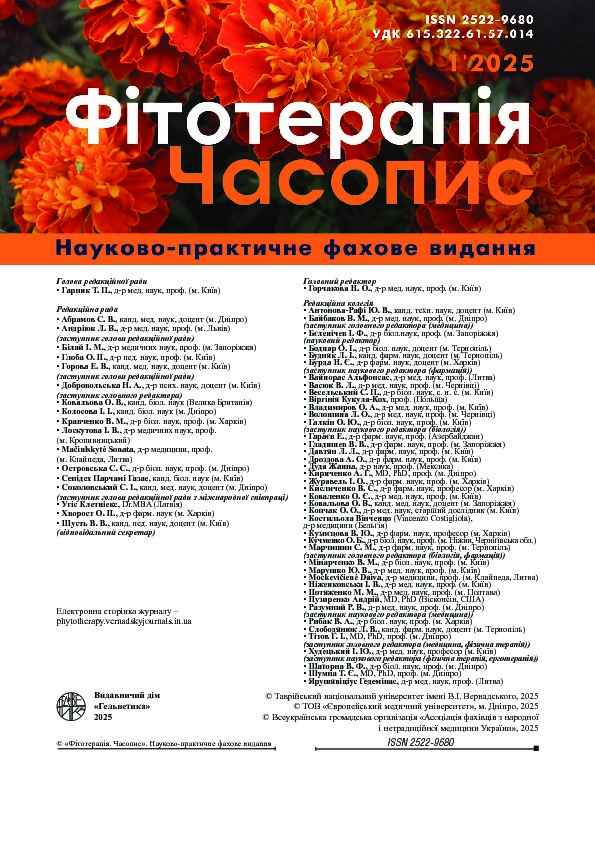id: 39396
Назва: Specific Activity of Radionuclides in Bee Pollen Produced From Flower Pollen of Nectar-Bearing Plants of Polissya of Ukraine
Автори: Razanov S., Kutsenko M., Razanova A., Razanov O., Ohorodnichuk H., Gucol G., Lysak H., Pavkovych S., Husak O.
Ключові слова: floral pollen, nectar- and pollen-producing plants, 40K, 226Ra, 232Th
Дата публікації: 2025-05-28 14:26:55
Останні зміни: 2025-05-28 14:26:55
Рік видання: 2025
Аннотація: Actuality. Reducing ionizing radiation exposure among the population is one of the top priorities in today’s environmental conditions, characterized by increasing radiation loads. One of the most effective measures for reducing radiation exposure is to prevent the entry of radioactive substances into the food chain by minimizing their concentration in food products. Beekeeping products made from floral pollen hold a significant niche in providing the human body with biologically active substances. Consequently, the use of bee products in human nutrition, particularly for therapeutic and preventive purposes, is rapidly growing. However, it is necessary to monitor the levels of radioactive substances in these products to predict the potential radiation exposure when they are used as food raw materials. The aim of the research is to investigate the specific activity of ⁴⁰K, ²²⁶Ra, and ²³²Th in bee pollen obtained from the floral pollen of white sweet clover (Melilotus albus), milk thistle (Silybum marianum), globe thistle (Echinops sphaerocephalus), narrow-leaved lupine (Lupinus angustifolius), and tansy-leaved phacelia (Phacelia tanacetifolia) grown on sod-podzolic soils of Polissya. Material and methods. The research was conducted in Polissya in the Korosten district of Zhytomyr region. The research material was bee pollen produced from the floral pollen of nectar-bearing plants. The research methods included radiological analysis (determination of 40K, 226Ra, and 232Th using gamma-spectrometric methods), statistical methods (biometric data processing), and analytical methods (review and analysis of literature sources). Research results. The studies showed that the specific activity of radioactive isotopes in bee pollen, produced from the floral pollen of nectar-bearing plants, depends on their botanical origin. It was established that the specific activity of ⁴⁰K in bee pollen significantly exceeded the specific activity of ²²⁶Ra and ²³²Th. In particular, in bee pollen from white sweet clover (Melilotus albus), the specific activity of ⁴⁰K exceeded the specific activity of ²²⁶Ra and ²³²Th by 9,78 times and 6,95 times, respectively; from milk thistle (Silybum marianum) – by 24,2 and 18,6 times; from globe thistle (Echinops sphaerocephalus) – by 10,5 and 9,2 times; from narrow-leaved lupine (Lupinus angustifolius) – by 11,8 and 7,78 times; and from tansy-leaved phacelia (Phacelia tanacetifolia) – by 16,8 and 9,98 times, respectively. The specific activity of ⁴⁰K in bee pollen was found to increase in the following order: globe thistle → white sweet clover → tansy-leaved phacelia → milk thistle → narrow-leaved lupine; ²²⁶Ra: spotted milk thistle → tansy-leaved phacelia → globe thistle → white sweet clover → narrow-leaved lupine; and ²³²Th: milk thistle → globe thistle → tansy-leaved phacelia → white sweet clover → narrow-leaved lupine.
URI: http://repository.vsau.org/repository/getfile.php/39396.pdf
Тип виданя: Статті Scopus
Видавництво: Phytotherapy Journal. 2025. Vol. 1. P. 151-159. DOI: https://doi.org/10.32782/2522-9680-2025-1-151
Розташовується в колекціях :
Ким внесений: Адміністратор
Файл : 39396.pdf Розмір : 1189168 байт Формат : Adobe PDF Доступ : Загально доступний

| |
|
|